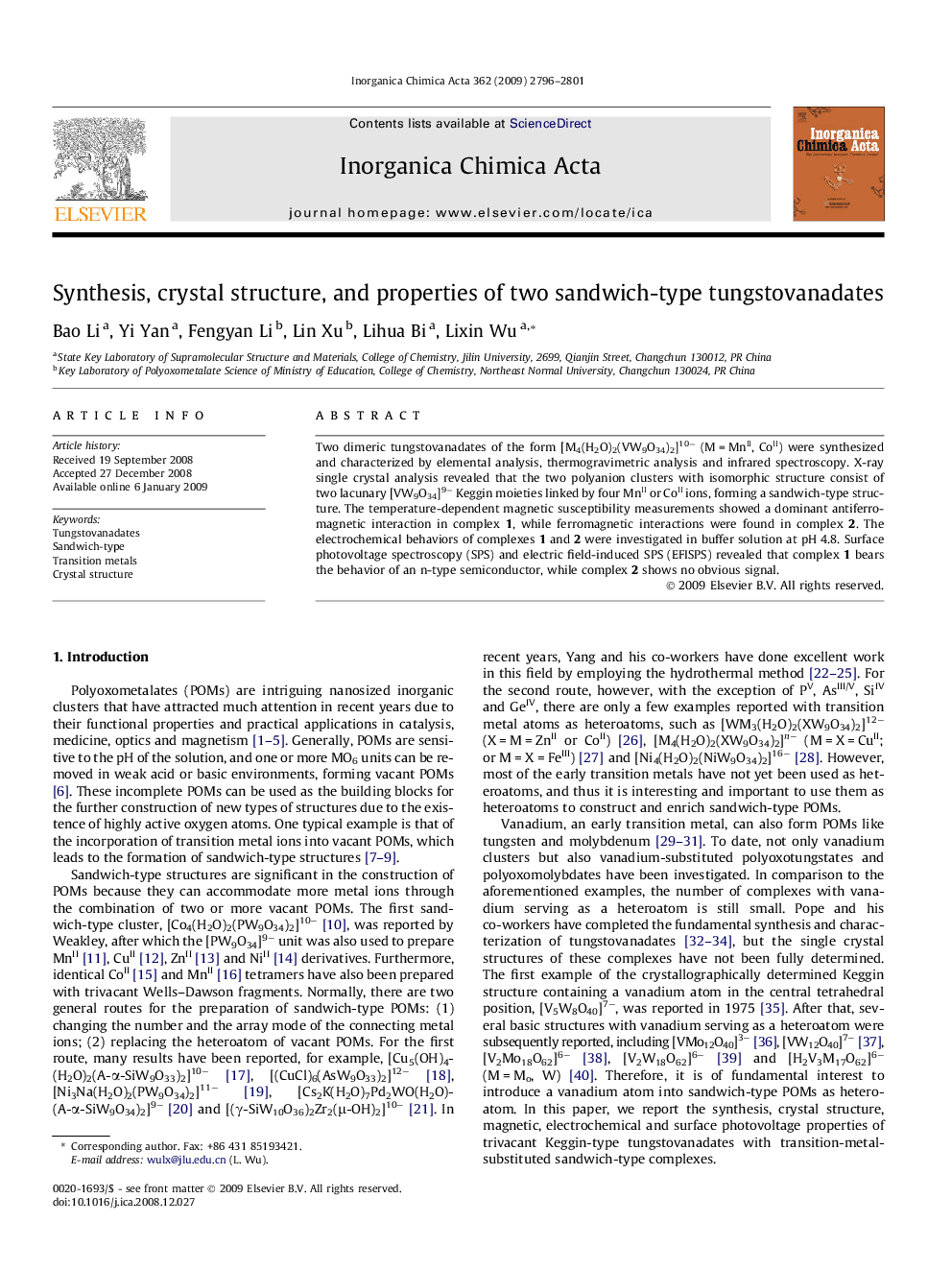| Article ID | Journal | Published Year | Pages | File Type |
|---|---|---|---|---|
| 1308745 | Inorganica Chimica Acta | 2009 | 6 Pages |
Two dimeric tungstovanadates of the form [M4(H2O)2(VW9O34)2]10− (M = MnII, CoII) were synthesized and characterized by elemental analysis, thermogravimetric analysis and infrared spectroscopy. X-ray single crystal analysis revealed that the two polyanion clusters with isomorphic structure consist of two lacunary [VW9O34]9− Keggin moieties linked by four MnII or CoII ions, forming a sandwich-type structure. The temperature-dependent magnetic susceptibility measurements showed a dominant antiferromagnetic interaction in complex 1, while ferromagnetic interactions were found in complex 2. The electrochemical behaviors of complexes 1 and 2 were investigated in buffer solution at pH 4.8. Surface photovoltage spectroscopy (SPS) and electric field-induced SPS (EFISPS) revealed that complex 1 bears the behavior of an n-type semiconductor, while complex 2 shows no obvious signal.
Graphical abstractTwo tungstovanadates, [M4(H2O)2(VW9O34)2]10− (M = MnII, CoII), were synthesized and characterized. Both of them possess sandwich-type structures with vanadium serving as heteroatoms, and their magnetic, electrochemical and surface photovoltage properties were investigated.Figure optionsDownload full-size imageDownload as PowerPoint slide
